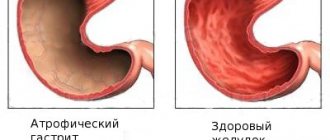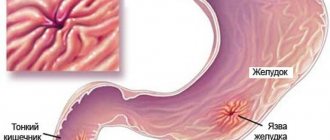The intestines are the most important organ on which not only good health, but also appearance depends. Most modern people suffer from digestive disorders, bowel problems, and hemorrhoids. These diseases greatly reduce the quality of life and make it difficult to concentrate on daily problems. Chronic constipation and hemorrhoids are the most common combination. Both diseases are closely related and often aggravate each other. It is important to promptly identify symptoms and carry out proper treatment.
Microlax is a combined laxative drug that quickly cleanses the intestines. The drug is effective for hemorrhoids, constipation, weakening of colon peristalsis. Microlax for hemorrhoids thins stool and facilitates bowel movements.
Pharmacology
The drug is a laxative. Intended for rectal use. The composition contains several active components that enhance each other’s effect on the human body, helping to soften stool and facilitate the process of defecation.
Sorbitol helps increase the amount of fluid entering the intestinal lumen, which increases the volume of stool and softens it. As a result, the process of defecation is greatly facilitated.
Sodium citrate helps displace fluid from stool.
As a result, water is displaced from the stool and the amount of fluid entering the intestines increases, which significantly facilitates the process of defecation in people who suffer from hemorrhoids and constipation.
The effect of the drug is observed within 5-10 minutes from the moment of using the microenema. But the effect of the drug may depend on the patient’s personal characteristics.
Information on pharmacodynamics is not available.
Indications for use of the drug Microlax
Microlax can be used for constipation in children and adults.
The instructions for use of the drug indicate that it can be used for hemorrhoids, to treat constipation and for weakened intestinal motility. The use of the drug in its effect replaces the use of an enema before proctological examinations. Thus, the drug is prescribed to the patient in the following cases:
- Constipation in children and adults, regardless of the cause of its occurrence
- Preparation of the colon for sigmoidoscopy, irrigoscopy and other studies of the colon
- Preparation for gynecological examinations - in particular, preparation for ultrasound examination. Using Microlax an hour before the examination allows you to avoid a series of unpleasant cleansing procedures
- Treatment of anal fissures - the procedure is designed to remove the remains of feces that injure the intestinal walls and relieve pain
- Restoring the body's condition during the period after proctological operations - Microlax accelerates the healing of damaged tissues and shortens the body's recovery time
You can also take the drug during pregnancy and lactation; however, it is recommended to consult your doctor about the possible risks and side effects of using this laxative. Since the concentration of the constituent components in the drug is very small, dissolving in the blood and quickly being eliminated, these substances do not cause any significant harm to the body, unlike most other laxatives.
How to use Microlax
The medicine is used rectally. Before giving an enema, you need to wash your hands well and thoroughly clean the area around the anus. The seal must be broken off immediately before insertion. After removing the seal, you need to press on the tube so that the solution comes out. After this, the tip is inserted into the anus and the entire contents of the tube are squeezed out. You need to take out the enema with the walls of the tube compressed.
From the age of 3, the tip must be inserted completely. For younger children, half will be enough. One enema will be enough for a one-time dose.
The frequency of use and dosage can only be determined by a specialist, taking into account the individual characteristics of the patient.
Many people wonder about the emergence of addiction. Doctors say that you should not take the medicine for a long time. If a person has chronic constipation, then it is worth making an appointment with a doctor to undergo an examination and prescribe further treatment.
It is not recommended to take the medicine in parallel with alcoholic beverages.
Reviews about the drug are in most cases positive. In 95% of cases, the treatment takes place without any adverse reactions or discomfort. Parents note that Microlax has a much better and more effective effect on young children than other medications.
Dosage and method of administration of the drug
Microlax can be used by both children and adults.
The instructions below are intended for use of the drug by adults and children over three years of age:
- Wash your hands and thoroughly clean the skin in the anal area
- Break off the seal - the tip of the microenema, press until a tube of solution appears at the exit
- Insert the tip into the rectum and gradually squeeze out the contents of the tube
- With the walls of the tube squeezed, remove the used packaging
The difference in using microenemas for young children is that the tip of the tube is only inserted halfway into the rectum. After the procedure, it is recommended to do a circular massage of the abdomen, moving your palm clockwise. The dosage remains the same for all ages - 5 ml of the drug (one full tube). The effect is noticeable already in the first 5-15 minutes after using the drug Microlax. If no changes are observed, it is strongly recommended to consult a doctor.
Many doctors prescribe Microlax to pregnant women suffering from constipation before giving birth. In addition, this product is great for cleansing the body before contractions.
Analogs
To date, no drugs have been developed that could be classified as analogues of the active component. But there are analogues that are similar in the principle of influence and the list of indications for use. These products include glycerin suppositories, which can be given to adults and children from infancy. The cost of many analogues is lower.
Analogs based on the principle of action also include Glycerin and Norgalax. These drugs also have a laxative effect and are used rectally. Glycerin is also available in solution form for topical and external use.
Contraindications for use
Microenema Microlax is contraindicated in case of intestinal obstruction.
Like any other drug, Microlax has contraindications and side effects, the list of which is recommended to be read before the procedure. Among the contraindications for use are the following:
Release form, composition and packaging
The solution for rectal administration is colorless, opalescent and sticky.
| 1 ml | |
| sodium citrate | 90 mg |
| Sodium lauryl sulfocetate 70% | 12.9 mg, |
| what corresponds to sodium laurylsulfocate | 9 mg |
| 70% sorbital solution | 893 mg, |
| What corresponds to sorbitol content | 625 mg |
Excipients: sorbic acid 1 mg, glycerin 125 mg, purified water to 1 ml.
5 ml - disposable microspheres (polyethylene tubes with a short or universal tip and pickled closure) (4) - cardboard packaging. 5 ml - single use microlizers (polyethylene tubes with a universal tip and break-up closure) (12) - cardboard boxes.
Microlax during pregnancy
In pregnant women, the functionality of the intestines is often impaired, frequent constipation, hemorrhoids, etc. occur. And then expectant mothers wonder whether Microlax can be used during pregnancy. According to gynecologists, the safe drug effectively relieves constipation and hemorrhoids without interfering with the development of the fetus.
Safe Microlax is allowed to be taken by pregnant women
In addition, expectant mothers need to undergo a lot of tests during the entire period of pregnancy, before which it is necessary to cleanse the intestines. Microlax is used precisely for such purposes, which breaks down and liquefies feces, causing easy bowel movements.
Pregnant women are recommended to give microenemas in the following cases:
- On the eve of an ultrasound examination of the genital organs.
- For constipation or hemorrhoids.
- For fecal incontinence.
- During preparation for childbirth.
The drug does not have a negative effect on the embryo, since it acts only locally, without penetrating into the bloodstream. Microlax does not reduce intestinal motility or disrupt the tone of the uterus.
According to doctors, this drug effectively and delicately copes with constipation due to hemorrhoids, and does not harm the mother and child.
Predisposing factors
It is quite difficult to accurately determine the cause of hemorrhoids. Scientists have identified some factors that increase the risk of dilatation of the venous plexuses. These include:
- chronic constipation, lifting a heavy load, which increases intra-abdominal pressure;
- pregnancy, during which the pressure in the abdominal cavity also increases;
- “sedentary” work, which leads to stagnation in the pelvis, dilation of the veins, accumulation of blood in them with the subsequent formation of nodes;
- alcoholism, spicy foods, which increase blood flow in the hemorrhoidal plexuses.
Patients about Microlax
Almost all patients who have tested the medicine in action are satisfied with the results of the treatment. Only some experienced an allergic reaction after using the solution. This is how hypersensitivity to the components of the drug manifests itself.
Patient reviews: Alina: “Quite recently, my daughter, who is 5 years old, began to have problems with bowel movements; after a while she complained of pain in the anus during bowel movements. After that, we went to the pediatrician, who prescribed Microlax for us. I purchased the product at the pharmacy. The price, to be honest, is high. However, after the first use, I did not regret buying this drug. Literally 10 minutes later the baby went to the toilet without unnecessary discomfort. So, I think the price matches the quality.”
Irina: “When a child had problems with bowel movements, the doctor advised us to use Microlax as the safest remedy. However, I categorically disagree with this opinion, because after studying the composition I noticed lauryl sulfoacetate acid, and it is very toxic. After that, I also doubted the doctor’s competence. That’s why I treat the child with folk remedies. But my mother uses Microlax from time to time and is very happy with it.”
Igor: “Microlax helped me cope with constipation and hemorrhoids. However, I would like to note a huge drawback of this drug - its high price. It’s possible to buy it several times every six months, but I had to buy microenemas for a whole month. This significantly affects the family budget. Then a friend advised me to replace the drug with glycerin suppositories, the effect is almost the same, and the cost is much lower!”
Based on all of the above, Microlax is a laxative drug that is used as part of the complex treatment of hemorrhoids complicated by constipation. The drug has virtually no contraindications or side effects, and delicately cleanses the intestines of feces. For this reason, the medication is often prescribed to pregnant women and newborns. Despite its apparent safety, you should consult a doctor before using the drug.
Causes of constipation after childbirth
The regularity of bowel movements is affected by changes in the postpartum period, when the female body begins to rebuild. On the one hand, the tone of the colon is influenced by hormonal levels, which change dramatically after the birth of a child, on the other hand, the intestines continue to experience slight pressure from the uterus while it returns to its “non-pregnant” size within 6-8 weeks1.
In addition, some reasons that disrupt the regularity of bowel movements in pregnant women do not always disappear after childbirth1. Thus, the development of constipation in women who are breastfeeding is promoted1:
- irrational diet - lack of dietary fiber in the diet3;
- insufficient physical activity1;
- any stress that a young mother experiences - conflict situations, long travel or changes in usual lifestyle in connection with the birth of a child1,4;
- stretching of the muscles of the perineum and abdomen, which do not sufficiently support the intestines and other internal organs1;
- chronic diseases, for example, hemorrhoids2, anal fissures3, diseases of the digestive system, thyroid gland, adrenal glands1;
- medications1 or dietary supplements2 prescribed by a doctor during pregnancy or after childbirth.
Postpartum constipation is a fairly common occurrence after a cesarean section, the application of obstetric forceps or an episiotomy - cutting of the perineum2,3. According to some studies, in the first days after a cesarean section, constipation was observed in 57% of postpartum women7.
The reason for stool retention in these cases may be:
- Presence of surgical sutures. The surgeon places sutures at the site of perineal ruptures or surgical wounds on the anterior abdominal wall. Sometimes, due to fear that they will separate or weaken, a woman does not push, so the intestines do not empty completely1,2. In addition, pain at the site of the perineal incision may interfere with defecation7.
- Atony (weakening of tone) of the intestines is a common reaction to surgery, due to which peristalsis (wave-like contractions of the intestinal wall) simply becomes ineffective1.
to come back to the beginning
Diagnostic methods
After interviewing the patient’s complaints and collecting anamnesis, the doctor conducts a digital rectal examination, during which he determines the location, size, and severity of hemorrhoids. For a more accurate diagnosis, the specialist further requires the results of anoscopy, which allows a targeted examination of the rectum.
If it is necessary to examine other parts of the intestine, sigmoidoscopy or colonoscopy may be prescribed. Differential diagnosis is carried out between anal fissure, oncological process in the intestine, intestinal prolapse and polyps.










